When you purchase a hoverboard, you’d want to take a ride on it indoors as well as outdoors. Speaking of outdoors, the one question that comes to mind is, ‘Can you ride a hoverboard on grass?’
Well, luckily, the answer is a simple yes. Although hoverboards were initially designed to ride on flat, even surfaces, there are various types available today that can glide over the smooth pavement as well as on rough terrain.
Hoverboards aren’t just popular among kids and riding enthusiasts but are also used widely by urban commuters in many parts of the world. So people now look for hoverboards that can handle more than a polished sidewalk or pavement.
Let’s find out a little more about hoverboards intended for rough surfaces like gravel, grass lawns, carpet, or dirt roads.
Which Hoverboard is Suitable to Ride on Grass, Gravel, Dirt, and Carpet?
Buying a hoverboard isn’t really tough if you know what you need out of them. For a leisure rider looking to step out and stay active, a standard hoverboard is a go-to board.
But if you’re a true adventure seeker and want to test your riding skills on a rough, uneven surface, you might want to look for off-road hoverboards. Also known as all-terrain hoverboards, these boards are specially designed to ride on grass, outdoor trails, and uneven tracks.
Currently, the best hoverboard for a ride on grass is the Swagtron T6 model, which can easily carry a weight of 420 pounds and has 10-inch wheels. Self-balancing scooters like this can incline up to 30°, which helps you smoothly ride over bumps like a pro. Besides, it has amazing LED lights embedded into its body which gives it a vibrant look.
Factors to be Considered to Ride on Grass, Gravel, Carpet, and Dirt
Before you pick the hoverboard of your choice, there are several factors that you’d need to take into consideration. We’ve listed the major ones below:
Material of the Tires
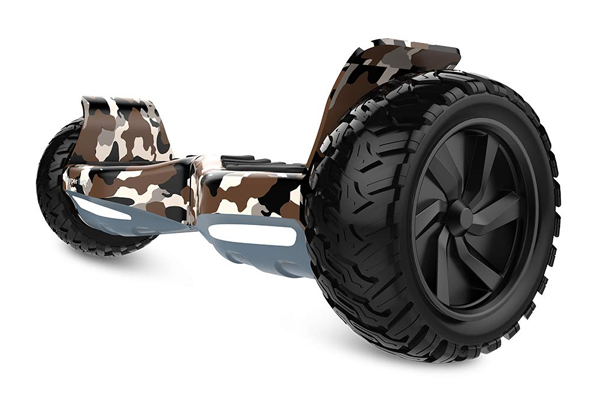
When it comes to terrain hoverboards, you should look for one with air-filled tires as they are best suited for uneven surfaces. These tires have good traction and will give you better stability both off-road and on. You’d have to keep an eye on the tire’s air pressure.
Size of the Tires
The ideal tire size for an off-road hoverboard is 8.5 inches and above. Tires below this range will work well on smooth surfaces but aren’t quite suitable if you ride them over a muddy, beaten path. As a thumb rule, smaller tires tend to have fewer off-road capabilities.
Tread Pattern
A combo of directional and asymmetrical tire tread will ensure a strong grip. The V-shaped pattern of the directional tread discharges to water, while the asymmetrical tread gives excellent traction in dry weather. Check out rugged hoverboards with a staggered, deep tread pattern.
Motor
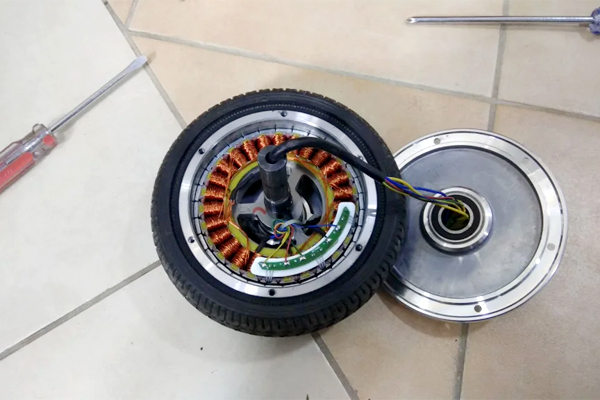
Do you know what the secret is behind an ultra-performance hoverboard? A powerful motor! To venture out on an outdoor trail in flair, your hoverboard must house a motor of 200 W or more.
Speed
The speed of the hoverboard is generally determined by the quality of its motor and battery specifications. Most off-road hoverboards on a budget typically go nine kph, while costlier ones can go up 16 kph. While riding on gravel or dirt, the speed of your hoverboard might get affected by your weight as much as the motor or size and material of the tires.
Size of the Gravel
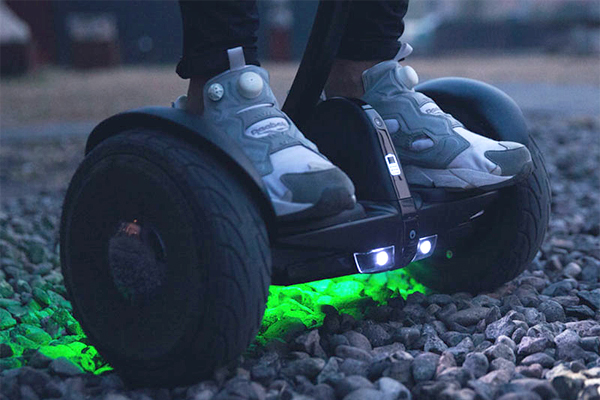
While tiny particles of gravel aid the movement of an off-road hoverboard, huge chunks can be an obstruction. It might even cause you to lose balance, or your board might skid. Check the size of the gravel before you go for a ride.
Quality
All the aforementioned features determine the quality of a hoverboard; it can also be deduced by the kind of material used to build the parts. Parts of the best hoverboard are either built from plastic or metal. Now you know which type can damage easily and make your decision.
Weight Capacity
Hoverboards do not come with a fixed weight capacity. Consider a balancing hoverboard that offers a higher weight capacity as compared to your actual weight. This way, you’d be at no risk of crossing the weight limit.
Rider Skill
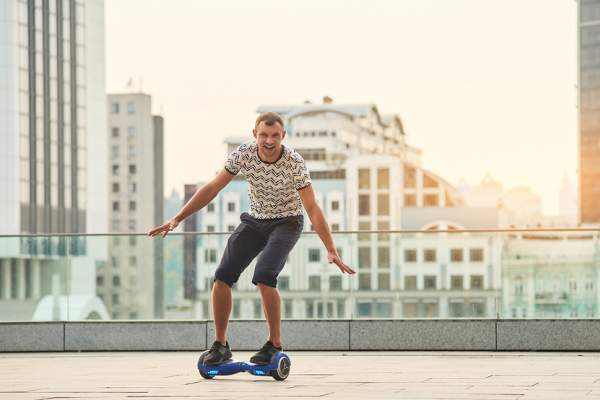
Leaving aside high-quality features, you must also be a practiced rider to take on off-road hoverboards. By now, you know that you can’t slide through the gravel as a first-timer.
Battery Life
The battery life of your hoverboard is a crucial factor. The typical charging time of an all-terrain hoverboard is 1-2 hours. A quick drop in the battery life can be problematic for you if you ride the board on grass, gravel, or carpet.
Final Verdict
The next time someone asks you, ‘Can you ride a hoverboard on grass?’, you’d know how to answer. Now that you have garnered good knowledge of the crucial factors, we hope you invest in a good hoverboard robust enough to handle any kind of surface.
Frequently Asked Questions
Which type of Hoverboard is the Best to Go on Grass?
An off-road hoverboard with good grip, long battery life, a powerful motor, and a tire size of 8.5 inches or more is the best to ride on grassy surfaces.
Is it Okay to Ride a Hoverboard on a Carpet?
Yes, you can, although it entirely depends on the quality of the hoverboard and the type of carpet you’re riding on. A high pile carpet is most recommendable as it doesn’t provide a lot of friction.
Will a Hoverboard Go Uphill?
Yes, it’s possible to ride your hoverboard on an uphill road. The incline-assist system in hoverboards helps you glide up without putting extra effort as well as control the speed while going downhill.
Does Riding on Grass, Gravel, or Dirt Affect the Motor?
Off-road hoverboards are designed to be driven on rugged surfaces. So, no! Riding on grass and gravel won’t affect the motor.
Will Battery Life be Affected While Riding on Grass or Gravel?
Ideally, battery life does not get affected while riding on grass or gravel. Opt for a hoverboard with long battery life to sustain a longer ride time.

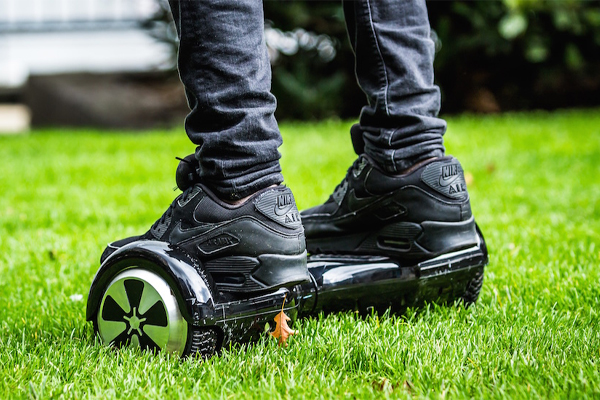
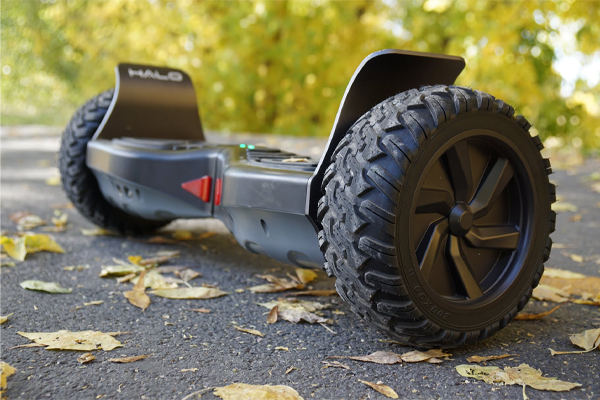

My 9 year old daughter wants a hoverboard for Xmas. It will be her first one but there are no smooth surfaces to ride on except driveway and gravel. Will it be too hard for her to learn on an off road board?